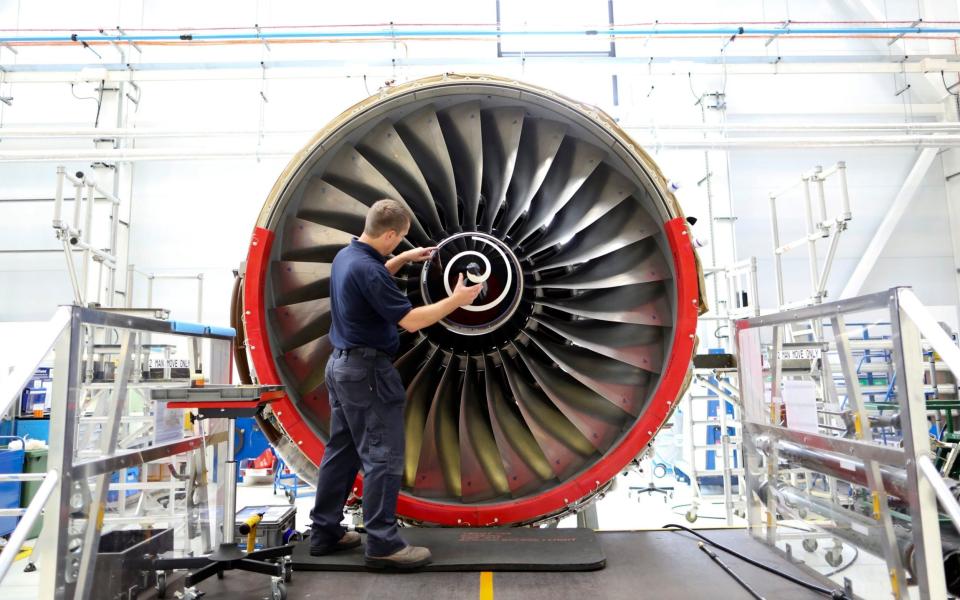Five charts that show the unemployment dam is about to break

Mark Twain once said that there are “lies, damned lies, and statistics” and the latest official figures on the jobs market rather prove his point.
Today’s figures from the Office for National Statistics tell us that the UK's unemployment rate was just 3.9pc in the three months to May, but only somebody living on the moon for the past six months will believe that is possibly the case.
The ONS, in fairness, is not intending to deceive. But in a week when the Office for Budget Responsibility has put the rate closer to 9pc, it has stuck rigidly to a definition of unemployment that paints an entirely misleading picture of the nation’s looming jobs catastrophe.
To see the signs of this, you have to look elsewhere in its myriad of charts beyond the bland-looking headlines. Covid-19 has presented unique challenges to statisticians along with the rest of the country. But to be unemployed in the official definition, you have to be not working and looking for a job. That means that those millions of workers on furlough – classed as “temporarily absent” from work – are counted as employed.
The Chancellor has warned against giving “false hope” by extending the furlough, and the OBR’s central scenario has 15pc of those 9.4 million jobs moving into unemployment. Hence it will soon become clear that a significant number of those workers are about to be permanently, rather than temporarily absent. Up to 500,000 employees count themselves temporarily absent with no income at all.
The pandemic meanwhile has also boosted the number of people dropping out of the labour force and counting themselves “economically inactive”. The number who want a job but are not looking is up a record 253,000 over the quarter, but that does not add to the unemployment tally.
John Philpott, a veteran labour market economist, says: “Add these extra ‘want work inactive’ people – the ‘hidden’ jobless - to the active unemployment pool and the full magnitude of the underlying labour market crisis becomes more apparent.”
Clearer hints of the pain are seen in measures such as the more experimental PAYE data, which shows 649,000 fewer employees on company payrolls in June compared to before the pandemic, as well as an extra 1.5 million benefit claimants.
The ONS warns that the expanded eligibility of universal credit means it is not a proxy for unemployment as benefits can be claimed by those in work, but it is likely to be closer to the truth than a headline unemployment rate of 3.9pc.
The claimant count data for “June” is usually only taken for the second Thursday of the month moreover, so the latest numbers were minted just days before UK companies announced tens of thousands of job cuts ahead of the curbing of the furlough scheme. There will be more bad news to come from this quarter.
Where “inactive” workers or the genuinely unemployed will find new positions meanwhile remains the key question as vacancies are currently at an all-time low, having collapsed since coronavirus struck.
That makes the task of the Chancellor, who has pumped billions into job centres and a new Kickstart work placement scheme, all the more urgent. “The official measure of job vacancies remains consistent with very large job losses over the coming months,” warns Samuel Tombs, chief UK economist at Pantheon Macroeconomics.
The other distorting impact of the taxpayer’s support for jobs is a record collapse in hours worked, bestowing an all-too temporary boost to the UK’s productivity, as it is mostly the lower-productivity services and hospitality jobs that have been furloughed.
But the job retention scheme also only covers 80pc of workers’ pay, which is reflected in annual pay growth turning negative for the first time in six years.
The pain on pay hardly represents conditions for a consumer recovery, despite the efforts of Sunak to pump-prime spending with restaurant vouchers and a VAT cut.
All told, these figures - and particularly the remarkably low headline jobless rate - do little more than illustrate the effect of putting the taxpayer’s finger in a creaking unemployment dam. As Investec economist Philip Shaw puts it, “one thing we are certain of is that Mr Sunak will surely have to adjust, or at least fine-tune, his policies in the Budget this autumn and quite possibly even before”. When the dam bursts, it won’t be pretty.

 Yahoo Finance
Yahoo Finance 